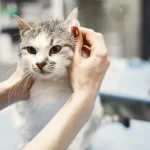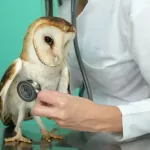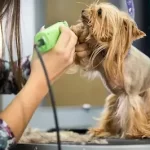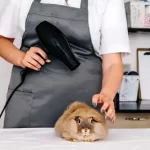Cats are known for their cleanliness and self-sufficient hygiene habits. Grooming is not just a luxury for them—it’s a vital part of their health and well-being. But how often should cats groom themselves, and when should pet owners step in? In this comprehensive, vet-approved guide, we’ll uncover everything you need to know about feline grooming behaviors, common grooming issues, and when to seek professional pet grooming services like those offered in Cat Grooming Abu Dhabi.
Understanding Natural Cat Grooming Behavior
Cats begin grooming themselves within the first few weeks of life. It’s instinctual. A healthy cat can spend 30% to 50% of their waking hours grooming. This behavior serves multiple purposes:
Cleansing the fur from dirt, parasites, and loose hair
Regulating body temperature through saliva evaporation
Bonding with other cats (social grooming or allogrooming)
Stimulating blood circulation and oil production
If your cat is not grooming often, or is grooming excessively, it could indicate underlying health issues.
Normal Grooming Frequency: What’s Considered Healthy?
A well-balanced grooming routine will vary depending on:
- Breed
- Age
- Health
- Environment
In general:
- Short-haired cats groom themselves effectively without much assistance.
- Long-haired breeds, like Persians or Maine Coons, may struggle with mats and tangles and often require professional pet grooming.
- Elderly or obese cats may have limited mobility, leading to inadequate grooming and hygiene problems.
So while daily self-grooming is normal, it’s essential to observe changes in grooming behavior, as they can be early signs of issues ranging from arthritis to anxiety.
When to Be Concerned About Over-Grooming
Over-grooming is typically characterized by:
- Bald patches
- Red or irritated skin
- Frequent licking of a particular area
Common causes include:
- Fleas or skin allergies
- Stress or boredom
- Pain or discomfort in the area being licked
In some cases, over-grooming becomes compulsive and requires both medical and behavioral intervention. Veterinary consultation is a must in such scenarios.
Under-Grooming: A Silent Red Flag
If your cat stops grooming entirely or reduces grooming activity, it could point to:
- Dental pain
- Obesity
- Arthritis
- Cognitive dysfunction in older cats
Cats are masters at hiding pain. A sudden drop in grooming is often one of the first visible symptoms of illness. Don’t ignore it—schedule a vet appointment immediately.
The Importance of Human-Assisted Grooming
While cats are independent groomers, they can benefit greatly from human help, especially:
- Weekly brushing for short-haired cats
- Daily brushing for long-haired breeds
- Regular checks for ticks, fleas, or skin problems
Besides hygiene, grooming helps you bond with your cat and monitor their health. If you’re not confident doing it at home, opt for professional cat grooming in Abu Dhabi or your local area.
Benefits of Professional Cat Grooming in Abu Dhabi
The grooming industry in Abu Dhabi has evolved, offering specialized pet grooming services tailored to feline needs. Here’s what professional grooming can provide:
- Sanitary trims for hygiene maintenance
- Detangling and de-shedding for long-haired breeds
- Ear cleaning, nail trimming, and anal gland expression
- Hydrotherapy baths for skin and coat conditioning
Professional groomers are trained to detect early signs of dermatitis, parasites, infections, or lumps. Booking a grooming session isn’t just for aesthetics—it’s a preventive healthcare step.
If you’re a resident or visitor in the UAE, several premium pet salons offer cat grooming in Abu Dhabi with veterinary-approved standards.
How Often Should You Book Professional Grooming?
The frequency depends on several factors:
- Short-haired indoor cats: Every 3–4 months
- Long-haired cats: Every 4–6 weeks
- Elderly or mobility-limited cats: Every 4–8 weeks depending on condition
- Cats prone to matting or skin issues: As recommended by your vet
Regular professional grooming keeps your cat healthy, clean, and comfortable—especially in Abu Dhabi’s hot climate where cats can shed excessively.
DIY Grooming at Home: What You Can Do Between Appointments
Between professional sessions, your cat still needs regular care. Here’s a weekly checklist:
- Brush your cat’s coat: Use breed-appropriate brushes
- Check ears and eyes for discharge or redness
- Trim nails carefully if they grow too long
- Monitor their grooming habits for any behavioral changes
- Use cat-safe wipes for minor cleanups
These small steps ensure your cat’s hygiene remains optimal and reduce dependency on emergency grooming.
Special Grooming Needs by Breed
Different cat breeds require varying levels of grooming. Some examples:
- Persians & Himalayans: Daily grooming essential due to long, dense fur
- Sphynx: Needs regular bathing despite being hairless, as their skin produces more oils
- British Shorthair: Weekly brushing to control shedding
If you’re unsure of your cat’s needs, a consultation with a pet grooming expert or veterinarian is the best course of action.
Grooming and Your Cat’s Mental Health
A clean cat is often a happy cat. Grooming helps them:
- Feel secure
- Maintain body temperature
- Reduce anxiety
Conversely, grooming issues can lead to depression, discomfort, and behavioral changes. Never overlook mental well-being when evaluating grooming patterns.
Conclusion: Healthy Grooming Equals a Healthy Cat
Cats are elegant creatures that thrive on cleanliness. While they are naturally skilled at grooming themselves, they still rely on us to support their hygiene, especially when health, age, or breed gets in the way.
By monitoring their grooming habits, scheduling regular pet grooming, and seeking professional cat grooming in Abu Dhabi, you ensure that your feline friend remains clean, comfortable, and healthy throughout their life.





